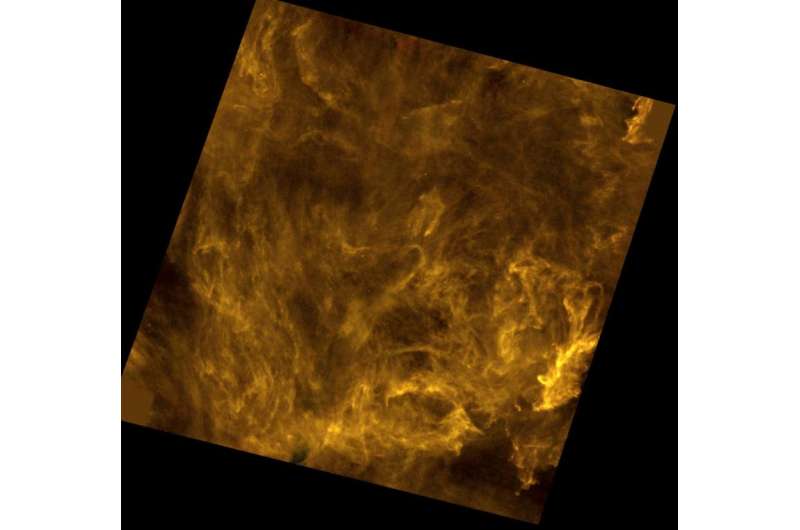Image: Interstellar filaments in Polaris

Just as the new calendar year begins, and with it a feeling of new beginnings, so this network of dust and gas shows a portion of sky where star birth is yet to take hold.
This region is in Polaris, 490 light-years away. It was imaged by ESA's Herschel space observatory in 2011; a colour composite is presented here.
It shows several tens of tangled interstellar filaments. Such filaments can stretch for tens of light-years through space and can precede the onset of star formation, with newborn stars often found in the densest parts.
Embedded within the filaments are a number of denser patches of material, but hardly any currently appear to be the seeds of future stars. As they are now, the filaments are simply not massive enough to support star formation.
Whether or not this currently calm region becomes a stellar nursery in the future remains to be seen.
The region was imaged by Herschel's Photodetector Array Camera and Spectrometer and Spectral and Photometric Imaging Receiver at infrared wavelengths of 250, 350 and 500 microns.
Provided by European Space Agency



















